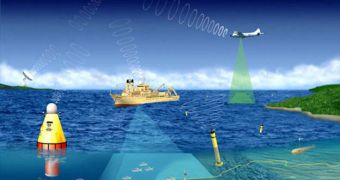A group of more than 60 universities in the United States was recently awarded a new research grant from the US National Oceanic and Atmospheric Administration (NOAA). The money will go to studying a large number of phenomena related to the oceans, and their effect on deep-water and coastal regions alike. All the universities and research institutions involved in this consortium have been working together with the federal government in this field for many years, and the collaboration has thus far produced numerous tangible results. Everything from storm surge or seasonal dead zones to tsunamis and disaster preparedness will be analyzed, quantified, and cataloged, NOAA announces.
The Administration decided to award the Southeastern Universities Research Association (SURA) $4 million. The funds are allotted through the Integrated Ocean Observing System (IOOS®) program, and will go towards evaluating the readiness of marine forecasts, both in the Atlantic Ocean, and in the Gulf of Mexico. Additional forecasts of marine events, such as the ones used by emergency managers, scientific researchers and the general public, will also be reassessed, and improved, if the need arises.
“Recent advances in science and computing capabilities are leading to improved tools to predict coastal ocean phenomena. This project creates an objective environment to compare the latest models for improved forecasting that will ultimately benefit the daily lives and livelihoods of millions of Americans,” explains the program director of the NOAA IOOS, Zdenka Willis. The expert explains that the IOOS initiative itself is a very useful tool, that can be used for “tracking, predicting, managing, and adapting to changes in our marine environment.”
“We are excited to embark on this collaborative research project. We feel uniquely qualified to partner with the federal agencies involved in U.S. IOOS in this important effort that will have practical impacts,” explains the president and CEO of SURA, Jerry P Draayer. He adds that numerous computer models currently destined to forecast various maritime events in the Atlantic and the Gulf will get revamped, and augmented with new datasets.

 14 DAY TRIAL //
14 DAY TRIAL //